In 1969, amidst the powerful waves of the civil rights movement, a visionary endeavor took root in New York City: the Dance Theatre of Harlem. Founded by Arthur Mitchell, a trailblazing figure in ballet, and Karel Shook, this institution was born from a desire to democratize dance and challenge the racial barriers prevalent in the classical arts. Dance Theatre of Harlem’s inception marked not only the creation of a significant American ballet company but also a powerful statement of artistic resistance and inclusivity.
Arthur Mitchell’s journey to founding Dance Theatre of Harlem was paved with personal triumphs and a deep understanding of racial inequality in the arts. In 1955, he made history as the first African American principal dancer with the New York City Ballet (NYCB), a remarkable achievement under the mentorship of the legendary George Balanchine. The assassination of Martin Luther King Jr. in 1968 deeply impacted Mitchell, solidifying his resolve to contribute to his community in Harlem. He envisioned creating opportunities for young dancers of color to excel in classical ballet, an art form historically dominated by white performers.
Mitchell’s initial efforts were humble yet profoundly impactful. He began teaching ballet in a converted garage in Harlem, creating an open and welcoming environment. He famously relaxed traditional ballet dress codes, encouraging young men to participate even in casual attire, breaking down socioeconomic barriers to entry. As student numbers grew, Mitchell partnered with his former ballet master, Karel Shook, to formalize the school and establish what would become the Dance Theatre of Harlem. This collaboration proved crucial in shaping the company’s artistic direction and ensuring its lasting influence on the American and global ballet landscape.
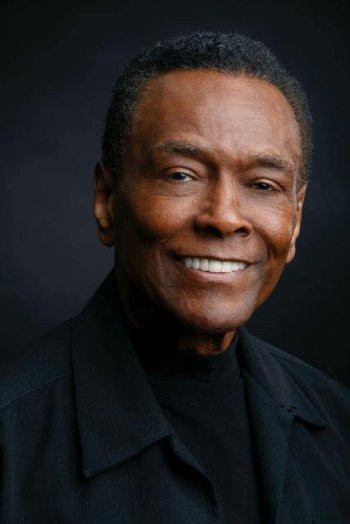 Arthur Mitchell in performance, showcasing his groundbreaking role as a principal dancer with the New York City Ballet.
Arthur Mitchell in performance, showcasing his groundbreaking role as a principal dancer with the New York City Ballet.
The early days of Dance Theatre of Harlem were characterized by inclusivity and diversity. Virginia Johnson, a founding member and later artistic director, recalls the company’s diverse makeup from its inception. The company included dancers of Asian, Mexican, and Black heritage, emphasizing that Dance Theatre of Harlem was not solely intended to be a “black ballet company.” Instead, its mission was to demonstrate that ballet, as a beautiful and rigorous art form, is universally accessible and belongs to everyone, regardless of background. This vision provided a platform for countless dancers who had been previously excluded from the predominantly white world of classical ballet.
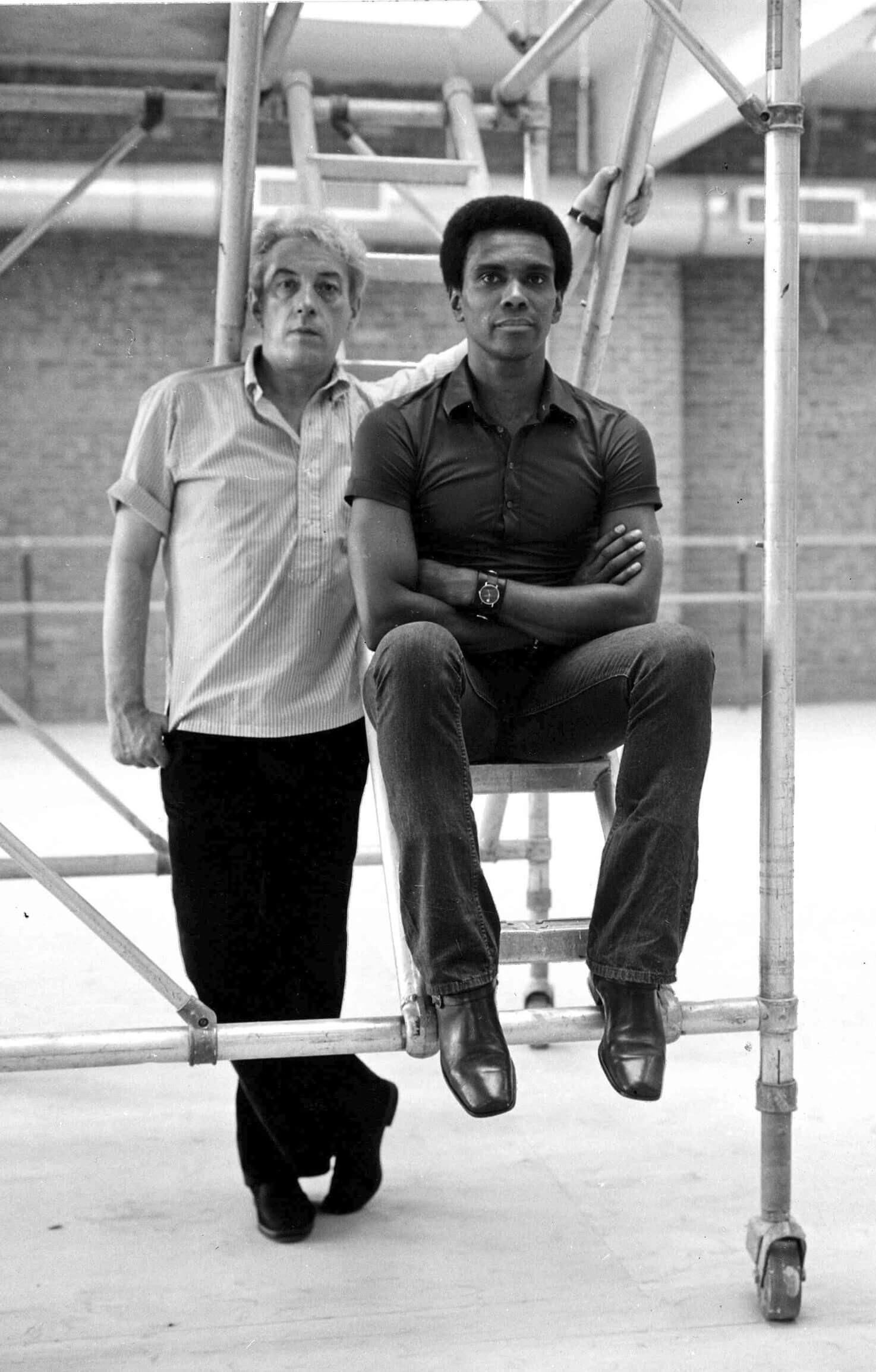 Co-founders Arthur Mitchell and Karel Shook in 1971, highlighting their partnership in establishing Dance Theatre of Harlem.
Co-founders Arthur Mitchell and Karel Shook in 1971, highlighting their partnership in establishing Dance Theatre of Harlem.
Dance Theatre of Harlem emerged during the Black Power movement, yet its approach was rooted in artistic excellence and opportunity rather than overt militancy. The company empowered dancers to define their own identities within the ballet world, challenging externally imposed limitations and perceptions. This ethos resonated deeply within a society grappling with racial identity and representation in the arts.
Ballet, with its European aristocratic origins, had long been perceived as an exclusive art form, both in terms of performers and audience. The historical context of ballet often emphasized European ideals and narratives, inadvertently creating the misconception that non-white dancers could not authentically embody its essence. However, figures like George Balanchine, even before Dance Theatre of Harlem, recognized the universality of ballet and sought to integrate dancers of color into the art form.
In the racially segregated America of Arthur Mitchell’s youth, opportunities for dancers of color in classical ballet were scarce. Balanchine, despite facing administrative resistance, was a notable advocate for integration. He included black dancers as guest artists in NYCB and created roles for dancers like Mary Hinkson, demonstrating his commitment to diversity within his company. While Mitchell is widely recognized as the first black principal dancer at NYCB, Arthur Bell, another African American dancer, preceded him, though his contributions were unfortunately largely forgotten until later rediscovered. Bell’s story underscores the challenges and lack of sustained opportunities faced by many black dancers in that era.
Mitchell’s own path to ballet began in Harlem, starting with tap classes and later transitioning to ballet at the High School of Performing Arts. His talent earned him a scholarship to the School of American Ballet, where he met Balanchine. Their relationship was transformative, with Balanchine recognizing in Mitchell not just a talented dancer but a catalyst for realizing his own vision of a more inclusive ballet world.
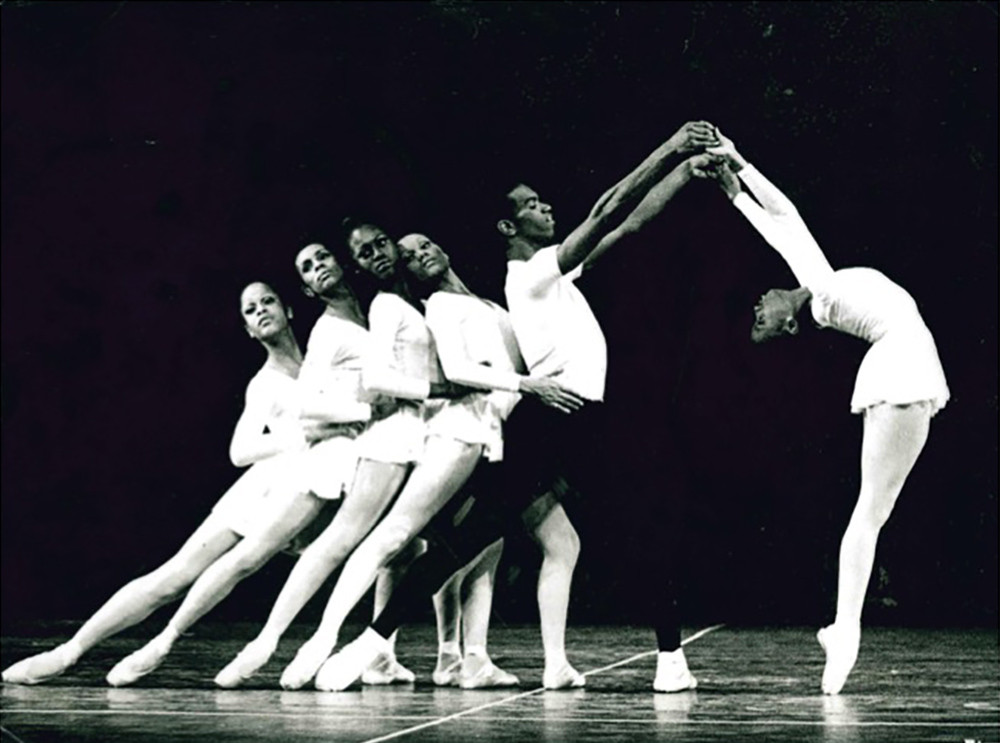 Dance Theatre of Harlem performing Concerto Barocco, a testament to their connection with George Balanchine's repertoire.
Dance Theatre of Harlem performing Concerto Barocco, a testament to their connection with George Balanchine's repertoire.
Balanchine choreographed iconic roles specifically for Mitchell, such as the groundbreaking pas de deux in Agon and Puck in A Midsummer Night’s Dream. This collaboration highlighted Balanchine’s belief that exceptional choreography is inspired not only by technical skill but also by the unique insights and perspectives of individual dancers. Mitchell, in turn, brought his own rich cultural background and experiences to the classical ballet form.
Dance Theatre of Harlem officially debuted in 1971 at the Guggenheim Museum, instantly earning critical acclaim. Later that year, Balanchine and Mitchell co-choreographed Concerto for a Jazz Band and Orchestra, a symbolic collaboration that merged classical ballet with jazz influences and provided a significant platform for the burgeoning Harlem-based company. Following a successful television special, Rythmetron, choreographed by Mitchell, Dance Theatre of Harlem launched its first full New York season in 1974, solidifying its place in the American dance scene.
Mitchell’s departure from NYCB to establish Dance Theatre of Harlem can be seen as a powerful act of self-determination, challenging the homogeneity he experienced in mainstream ballet. Virginia Johnson emphasizes that from its inception, Dance Theatre of Harlem championed diversity in its truest sense, directly contrasting the prevailing emphasis on sameness in ballet during the mid-20th century. Mitchell created opportunities for skilled and trained dancers to perform, grow, and evolve into world-class artists, opportunities often denied to them elsewhere.
 George Balanchine and Arthur Mitchell, illustrating their influential relationship and shared vision for ballet.
George Balanchine and Arthur Mitchell, illustrating their influential relationship and shared vision for ballet.
Balanchine’s support extended beyond collaboration; he granted Dance Theatre of Harlem rights to perform several of his ballets, providing the young company with a repertoire of recognized masterpieces. This invaluable gift enabled Dance Theatre of Harlem to quickly establish itself and, by 1979, embark on international tours with an impressive repertoire of 46 ballets. Throughout the 1980s, the company rose to prominence, revitalizing classic works like Firebird, Giselle, and Agon, while also exploring diverse pieces like Scheherazade and Bugaku.
Dance Theatre of Harlem continued to break barriers throughout the 1990s, earning global recognition for its artistic excellence and social impact. Notably, it became the first American ballet company to perform in Russia after the fall of the Soviet Union. In 1992, a tour to South Africa during the final years of apartheid served as a powerful cultural and political statement. Performing for racially mixed audiences and initiating outreach programs in townships, Dance Theatre of Harlem demonstrated the profound impact of a predominantly black and brown ballet company on international perceptions and social change, challenging racist ideologies through the universal language of dance. Their “Dancing Through Barriers” program in South Africa continues to thrive, a testament to the enduring legacy of this tour.
 Virginia Johnson in Glen Tetley’s Greening, highlighting her long and impactful career with Dance Theatre of Harlem.
Virginia Johnson in Glen Tetley’s Greening, highlighting her long and impactful career with Dance Theatre of Harlem.
Virginia Johnson succeeded Arthur Mitchell as Artistic Director in 2013, after a distinguished 25-year career as a principal dancer with the company and a 40-year international dance career. Taking on this role, Johnson aimed to honor Mitchell’s legacy while guiding the company into a new era. She recognized the evolving cultural landscape and the need to continually inspire new generations. Dance Theatre of Harlem faced a hiatus from 2004 to 2012 due to financial challenges, resulting in a generation missing the visibility of brown ballerinas, impacting the inspiration for young dancers of color.
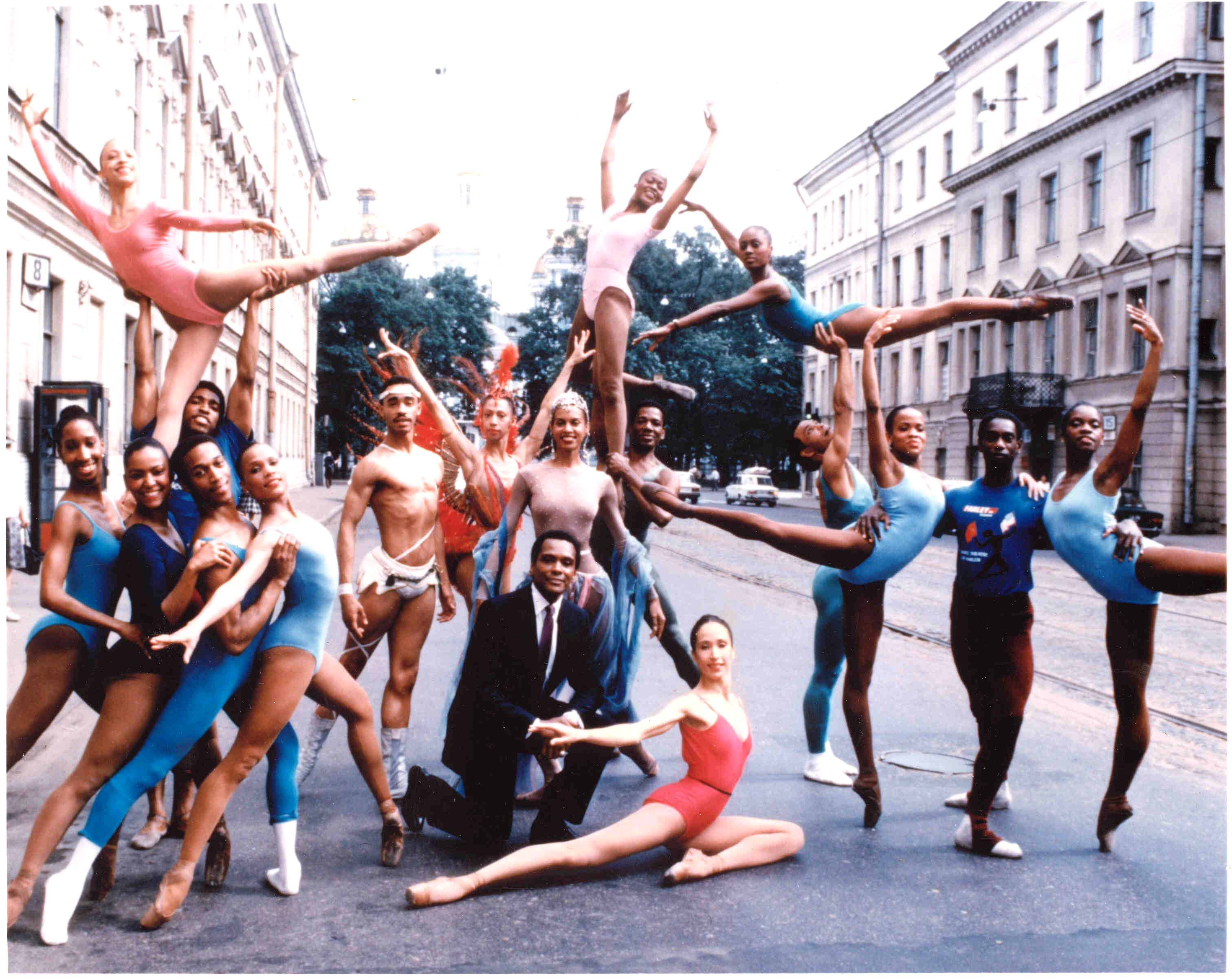 Dance Theatre of Harlem Company in Russia, marking a historic cultural exchange and breaking political barriers through art.
Dance Theatre of Harlem Company in Russia, marking a historic cultural exchange and breaking political barriers through art.
Under Johnson’s leadership, Dance Theatre of Harlem revitalized its presence and continued to champion its core values of access, opportunity, and excellence. Dance Theatre of Harlem stands as more than just a ballet company; it is a cultural institution that exemplifies the transformative power of inclusivity and artistic innovation. As Virginia Johnson retired as Artistic Director in 2023, passing the torch to Robert Garland, the legacy of Dance Theatre of Harlem remains vibrant and influential, continuing to inspire and shape the future of ballet.
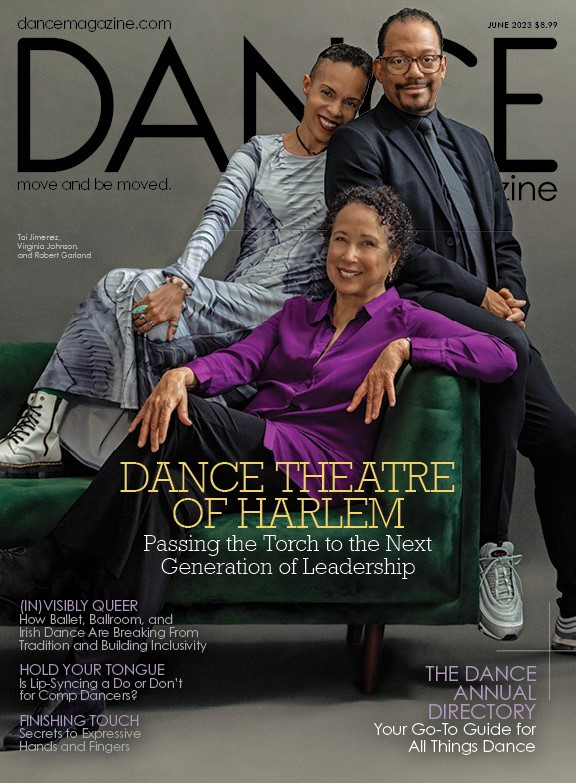 Dance Magazine Cover featuring Dance Theatre of Harlem, celebrating their significant contributions to the dance world.
Dance Magazine Cover featuring Dance Theatre of Harlem, celebrating their significant contributions to the dance world.
Dance Theatre of Harlem’s journey is a testament to the enduring power of art to transcend social barriers and inspire change. It serves as a constant reminder of the beauty and universality of ballet, proving that this art form truly belongs to all.
Support DTH | Join Our Mailing List
